Photo
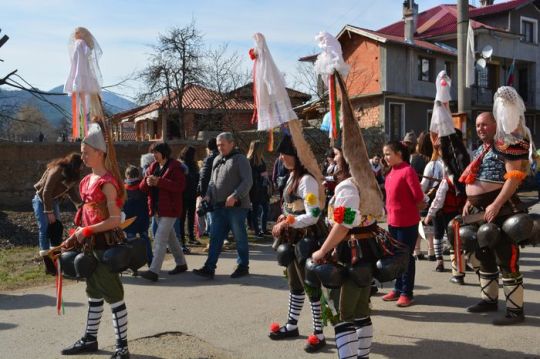
The Burial of Alexander and Draga
Unmarked Graves of Tragic Figures
In a quiet corner of Belgrade, far from the pomp and ceremony befitting royalty, lies the unceremonious resting place of King Alexander, aged twenty-six, and Queen Draga, aged forty. Their bodies, conveyed in a humble cart at dawn, were laid to rest behind the doors of the modest St. Mark’s Church cemetery. Two simple wooden crosses lean against the wall, bearing the names “Alexander Obrenovitch” and “Draga Obrenovitch.” There they lie, with no prayers uttered for their souls, no ceremony to honor their rank.
Europe’s Indignation
The world looked upon Serbia with rightful indignation at this latest crime staining its history. Foreign ministers withdrew in protest, marking their disapproval of the bloody revolution that claimed the lives of the young king and his controversial queen. However, when Prince Peter rushed to claim the throne and be crowned with an iron crown forged from the cannons of his ancestors, the European ministers swiftly returned, eager to pay homage to the new ruler. Only Great Britain remained aloof, refusing to participate in celebrations that included the revolutionaries Private Tours Bulgaria.
A Stand Against Injustice
Despite pressure from other European powers, Britain stood firm in its principles. While other ministers returned to Belgrade, eager to secure diplomatic advantages, Britain maintained its stance, refusing to condone the actions of the conspirators. The Serbian court, faced with the choice between appeasing foreign powers and honoring those who seized power through violence, ultimately chose the latter. As the world watched, Britain stood as a beacon of consistency, unwilling to compromise its values for political expediency.
0 notes
Photo

The Aftermath of Rebellion A Period of Uncertainty
Turkish Casualties and Insurgent Control
The casualties among the Turkish population in the aftermath of the uprising were minimal, with only a few deaths reported, aside from the previously mentioned gypsies who met their fate later. Following the insurgents’ seizure of the village, they wielded unchecked authority for several days. Despite their newfound control, their actions were relatively benign. They paraded through the streets in jubilant processions, proclaiming their newfound freedom and sovereignty. Surprisingly, they refrained from antagonizing neighboring Muslim villages, content with their current achievements and oblivious to the looming threat posed by the 5,000 regular troops stationed in Philippopolis.
Ignorance Amidst Freedom
The insurgents’ lack of awareness regarding the impending military response was striking. Instead of fortifying their positions or strategizing, they indulged in the simple pleasures of newfound liberty. Their festivities primarily revolved around marching through the streets and singing patriotic Bulgarian songs. However, there was one notable exception to their passive demeanor Private Tour Istanbul.
Allegations and Uncertainty
Inspired by the ease with which Avrat-Alan fell, the Christian population of neighboring Strelcha contemplated rebellion. Yet, given the village’s mixed demographics, with a substantial Turkish contingent, they sought reinforcements from Otluk-kui and Avrat-Alan. Insurgents answered the call for aid, resulting in a skirmish between the rebels and the Turkish residents. Tragically, the entire village was consumed by flames during the conflict. Both sides vehemently deny responsibility for the arson, with Christians blaming Turks and vice versa. However, it is likely that both factions played a role in the conflagration, with each targeting the other’s residential areas.
A Fractured Landscape
The events following the rebellion paint a picture of a fragile and divided community grappling with the aftermath of conflict. Amidst uncertainty and mutual suspicion, accusations fly, deepening the chasm between Christian and Muslim populations. As the smoke settles over the scorched ruins of Strelcha, it serves as a stark reminder of the destructive potential of sectarian strife and the urgent need for reconciliation and understanding.
0 notes
Photo
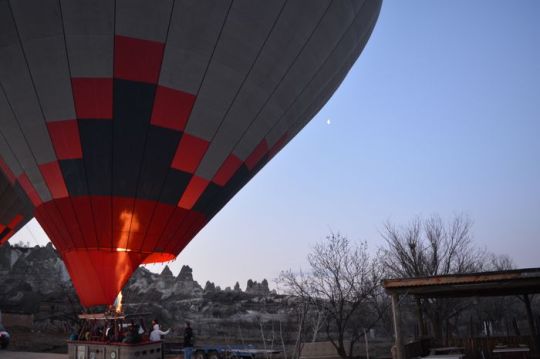
Exploring Thracian Heritage
The Valley of the Thracian Kings in Bulgaria, particularly in Kazanlak, boasts a rich Thracian heritage. Explore the ancient tombs surrounding the town, unraveling the mysteries of the Thracian civilization. Despite the ancient capital being submerged under Koprinka Lake, artifacts displayed at Iskra Museum offer a glimpse into its magnificence.
Historic Landmarks
Kazanlak is a land of beauty and mystery, adorned with historic sites like the UNESCO-listed Kazanlak Thracian Tomb and the Golyama Kosmatka, Ostrusha, and Svetitsa Mounds. Delve into the enigmatic world of the ancient Thracians by marveling at priceless artifacts such as the bronze head of Seuthes III and ancient frescoes. Museums and galleries provide deeper insights into the town’s past and Bulgarian traditions.
Rose Festival
Experience the allure of the Valley of Roses, where Rosa Damascena reigns supreme. Don’t miss the brief but enchanting period in late May to early June when the roses bloom, celebrated with gusto at the Rose Festival. Join the festivities, including the crowning of the Rose Queen, rose-picking rituals, and vibrant parades, immersing yourself in the region’s rose-growing traditions Istanbul Cultural Tours.
Natural Wonders
The Valley offers unforgettable experiences amidst its abundant natural beauty. From the balmy lowland climate to majestic mountains, verdant forests, and pristine lakes, the senses are rejuvenated. Embark on scenic hikes to Buzludzha Peak for panoramic views or explore charming villages on a biking tour, promising a delightful and rejuvenating vacation experience.
0 notes
Photo

The Brutal Aftermath Pillage and Massacre
Chaos and Carnage Unleashed
As night fell and the following morning arrived, troops and Bashi-Bazouks descended upon the town, initiating a rampage of pillage, violence, and slaughter reminiscent of the infamous events at Batak. No one, regardless of age or gender, was spared from the brutality unleashed upon the town. Homes were looted and set ablaze, with approximately one-fourth of the houses reduced to ashes. The streets became a battleground where people met their demise, whether on their own doorsteps or before their hearthstones. The cries of the elderly begging for mercy mingled with the screams of terrified children and infants, all falling victim to the merciless swing of the sabre. It is estimated that around 3,000 individuals lost their lives in this onslaught, including approximately 400 town residents and the remainder from neighboring villages seeking refuge Bulgaria Tours.
Attempts to Conceal the Atrocities
Unlike the scenes of horror witnessed in Batak, Hafiz Pacha acted swiftly to bury the bodies within three days, seeking to obscure the evidence of his heinous deeds. This calculated move aimed to erase traces of the massacre and evade accountability.
Responsibility of the Authorities
Despite attempts to attribute the atrocities solely to the Bashi-Bazouks, evidence suggests complicity of the authorities in the massacres. Whether perpetrated by regular troops or irregular forces, the cruelty displayed was equally appalling. Mr. Schuyler’s report will affirm that both regular and irregular troops were equally culpable, underscoring the guilt shared by Hafiz Pacha and his counterparts. The root of this savagery lies in the shared identity of the perpetrators as Turks, with distinctions between regular and irregular troops being insignificant in the face of their barbarism. These massacres were sanctioned by the authorities, evident in the subsequent rewards bestowed upon those responsible in the form of decorations and promotions.
The aftermath of the pillage and massacre depicted a harrowing scene of devastation and loss, with innocent civilians bearing the brunt of unchecked violence. The attempts to conceal the atrocities and deflect blame underscore the systemic nature of the brutality, implicating the highest echelons of authority. Such atrocities serve as a sobering reminder of the human cost of unchecked power and the urgent need for accountability and justice.
0 notes
Photo
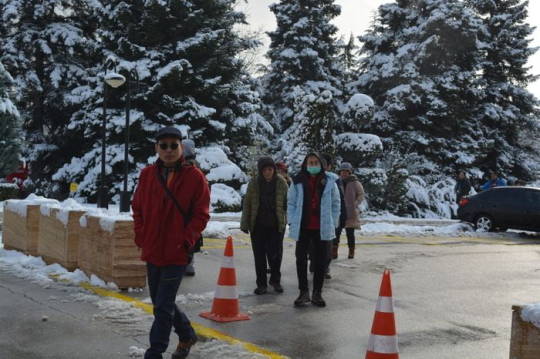
Unveiling Horrors The Journey to Batak
A Grim Revelation
Since my last correspondence, each passing moment has unfolded a new layer of horror, leaving me shaken to the core. There is no tale of Turkish brutality that I do not now find credible, no atrocity beyond the realm of possibility. The Turks have surpassed all limits of barbarity, reaching a point where mere words fail to convey the depth of their depravity.
A Threshold of Inhumanity
There comes a point where the atrocities become so egregious that rational analysis falters, and the mind recoils in horror. The path forward is obscured by mountains of unspeakable cruelty, rendering further investigation futile. It is a realm where moral compasses shatter, and the soul cries out for respite from the relentless onslaught of brutality Private Guide Turkey.
A Perilous Journey to Batak
Our journey to Batak was fraught with obstacles, as local authorities, aggrieved by Mr. Schuyler’s refusal to be accompanied by Turkish officials, sought to impede our progress. Despite their efforts to thwart us, the resilience of the villagers prevailed, as they clandestinely provided us with horses to continue our journey.
Defying Oppression
In the face of official prohibition, the villagers defied orders with remarkable determination, initially presenting us with horses without saddles as a subtle protest. Undeterred, we requested saddles, prompting the villagers to swiftly comply, their actions a silent rebuke to the oppressive dictates of authority.
Unified Resolve
Amidst the challenges and uncertainties of our journey, the unwavering solidarity of the villagers emerged as a beacon of hope. Despite the specter of retribution, they stood united in their defiance, demonstrating an indomitable spirit in the face of tyranny.
A Testament to Resilience
As we embarked on the next leg of our journey, the echoes of the villagers’ resolve lingered in the air, a poignant reminder of the human capacity for resistance in the darkest of times. In their defiance, we found inspiration, reaffirming our commitment to bearing witness to the unspeakable horrors that awaited us in Batak.
0 notes
Photo

Unveiling Horrors The Journey to Batak
A Grim Revelation
Since my last correspondence, each passing moment has unfolded a new layer of horror, leaving me shaken to the core. There is no tale of Turkish brutality that I do not now find credible, no atrocity beyond the realm of possibility. The Turks have surpassed all limits of barbarity, reaching a point where mere words fail to convey the depth of their depravity.
A Threshold of Inhumanity
There comes a point where the atrocities become so egregious that rational analysis falters, and the mind recoils in horror. The path forward is obscured by mountains of unspeakable cruelty, rendering further investigation futile. It is a realm where moral compasses shatter, and the soul cries out for respite from the relentless onslaught of brutality Private Guide Turkey.
A Perilous Journey to Batak
Our journey to Batak was fraught with obstacles, as local authorities, aggrieved by Mr. Schuyler’s refusal to be accompanied by Turkish officials, sought to impede our progress. Despite their efforts to thwart us, the resilience of the villagers prevailed, as they clandestinely provided us with horses to continue our journey.
Defying Oppression
In the face of official prohibition, the villagers defied orders with remarkable determination, initially presenting us with horses without saddles as a subtle protest. Undeterred, we requested saddles, prompting the villagers to swiftly comply, their actions a silent rebuke to the oppressive dictates of authority.
Unified Resolve
Amidst the challenges and uncertainties of our journey, the unwavering solidarity of the villagers emerged as a beacon of hope. Despite the specter of retribution, they stood united in their defiance, demonstrating an indomitable spirit in the face of tyranny.
A Testament to Resilience
As we embarked on the next leg of our journey, the echoes of the villagers’ resolve lingered in the air, a poignant reminder of the human capacity for resistance in the darkest of times. In their defiance, we found inspiration, reaffirming our commitment to bearing witness to the unspeakable horrors that awaited us in Batak.
0 notes
Photo

Unveiling Horrors The Journey to Batak
A Grim Revelation
Since my last correspondence, each passing moment has unfolded a new layer of horror, leaving me shaken to the core. There is no tale of Turkish brutality that I do not now find credible, no atrocity beyond the realm of possibility. The Turks have surpassed all limits of barbarity, reaching a point where mere words fail to convey the depth of their depravity.
A Threshold of Inhumanity
There comes a point where the atrocities become so egregious that rational analysis falters, and the mind recoils in horror. The path forward is obscured by mountains of unspeakable cruelty, rendering further investigation futile. It is a realm where moral compasses shatter, and the soul cries out for respite from the relentless onslaught of brutality Private Guide Turkey.
A Perilous Journey to Batak
Our journey to Batak was fraught with obstacles, as local authorities, aggrieved by Mr. Schuyler’s refusal to be accompanied by Turkish officials, sought to impede our progress. Despite their efforts to thwart us, the resilience of the villagers prevailed, as they clandestinely provided us with horses to continue our journey.
Defying Oppression
In the face of official prohibition, the villagers defied orders with remarkable determination, initially presenting us with horses without saddles as a subtle protest. Undeterred, we requested saddles, prompting the villagers to swiftly comply, their actions a silent rebuke to the oppressive dictates of authority.
Unified Resolve
Amidst the challenges and uncertainties of our journey, the unwavering solidarity of the villagers emerged as a beacon of hope. Despite the specter of retribution, they stood united in their defiance, demonstrating an indomitable spirit in the face of tyranny.
A Testament to Resilience
As we embarked on the next leg of our journey, the echoes of the villagers’ resolve lingered in the air, a poignant reminder of the human capacity for resistance in the darkest of times. In their defiance, we found inspiration, reaffirming our commitment to bearing witness to the unspeakable horrors that awaited us in Batak.
0 notes
Photo
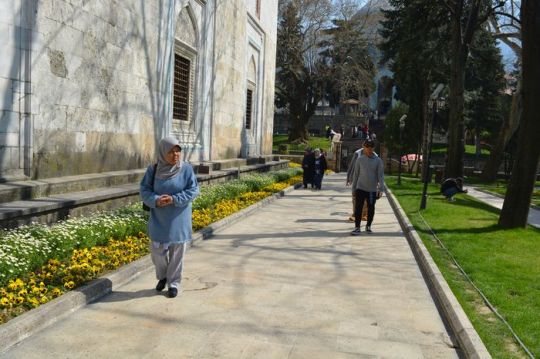
Bulgarian Literature
National Revival to Modern Era
Father Paisi’s Legacy and National Revival
Father Paisi’s influential work, handwritten due to the absence of printing presses, sparked the Bulgarian national revival. Poet Dimiter Popslti celebrated the leader Sofroni Vrachanski in 1813. Naiden Gerov (1823-1867) wrote the first Bulgarian poem, “Stoyan and Rada” (1845). Notable figures include Georgi Kakovski, Petko Slaveikov, and Dobri Chintulov. Christo Botev (1848-1876), a leading poet, fought against the Turks, while novelist Lyuben Karavelov (1835-1879) gained fame for “Bulgarians of Old Times.” Ivan Vazov (1850-1921) earned the title of the Patriarch of Bulgarian literature with “Under the Yoke,” portraying life during Turkish rule.
Post-Liberation Era and Narodnitsi Movement
After Liberation, influenced by German literature, aesthetic individualism emerged, led by critic Dr. Krustiu Krustev and poets Pencho Slaveikov and Kiril Christov. Writers focused on national unification, reflecting melancholy and despair. Symbolism appeared in works by Teodor Traianov, P. K. Yavorov, Dimcho Debelianov, and Nikolai Liliev Private Istanbul Tour.
Modern Bulgarian Writers
Addressing everyday life, modern Bulgarian writers continue the narodnitsi tradition. Notable figures include Iordan Iovkov, Elin Pelin, Konstantin Petkanov, and Angel Karaliichev, exploring diverse facets of contemporary existence.
0 notes
Photo

Bulgarian Literature
National Revival to Modern Era
Father Paisi’s Legacy and National Revival
Father Paisi’s influential work, handwritten due to the absence of printing presses, sparked the Bulgarian national revival. Poet Dimiter Popslti celebrated the leader Sofroni Vrachanski in 1813. Naiden Gerov (1823-1867) wrote the first Bulgarian poem, “Stoyan and Rada” (1845). Notable figures include Georgi Kakovski, Petko Slaveikov, and Dobri Chintulov. Christo Botev (1848-1876), a leading poet, fought against the Turks, while novelist Lyuben Karavelov (1835-1879) gained fame for “Bulgarians of Old Times.” Ivan Vazov (1850-1921) earned the title of the Patriarch of Bulgarian literature with “Under the Yoke,” portraying life during Turkish rule.
Post-Liberation Era and Narodnitsi Movement
After Liberation, influenced by German literature, aesthetic individualism emerged, led by critic Dr. Krustiu Krustev and poets Pencho Slaveikov and Kiril Christov. Writers focused on national unification, reflecting melancholy and despair. Symbolism appeared in works by Teodor Traianov, P. K. Yavorov, Dimcho Debelianov, and Nikolai Liliev Private Istanbul Tour.
Modern Bulgarian Writers
Addressing everyday life, modern Bulgarian writers continue the narodnitsi tradition. Notable figures include Iordan Iovkov, Elin Pelin, Konstantin Petkanov, and Angel Karaliichev, exploring diverse facets of contemporary existence.
0 notes
Photo

Bulgarian Literature
National Revival to Modern Era
Father Paisi’s Legacy and National Revival
Father Paisi’s influential work, handwritten due to the absence of printing presses, sparked the Bulgarian national revival. Poet Dimiter Popslti celebrated the leader Sofroni Vrachanski in 1813. Naiden Gerov (1823-1867) wrote the first Bulgarian poem, “Stoyan and Rada” (1845). Notable figures include Georgi Kakovski, Petko Slaveikov, and Dobri Chintulov. Christo Botev (1848-1876), a leading poet, fought against the Turks, while novelist Lyuben Karavelov (1835-1879) gained fame for “Bulgarians of Old Times.” Ivan Vazov (1850-1921) earned the title of the Patriarch of Bulgarian literature with “Under the Yoke,” portraying life during Turkish rule.
Post-Liberation Era and Narodnitsi Movement
After Liberation, influenced by German literature, aesthetic individualism emerged, led by critic Dr. Krustiu Krustev and poets Pencho Slaveikov and Kiril Christov. Writers focused on national unification, reflecting melancholy and despair. Symbolism appeared in works by Teodor Traianov, P. K. Yavorov, Dimcho Debelianov, and Nikolai Liliev Private Istanbul Tour.
Modern Bulgarian Writers
Addressing everyday life, modern Bulgarian writers continue the narodnitsi tradition. Notable figures include Iordan Iovkov, Elin Pelin, Konstantin Petkanov, and Angel Karaliichev, exploring diverse facets of contemporary existence.
0 notes
Photo
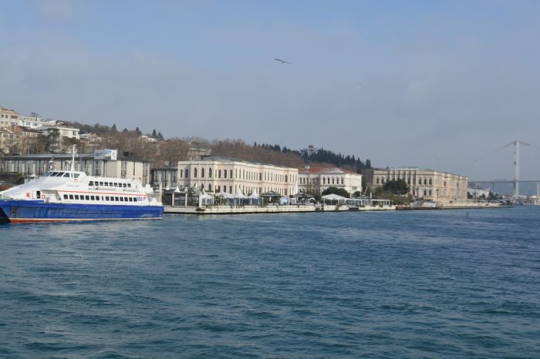
Bulgaria's Economic Recovery and Challenges (1997-2000)
The “Blue” Government and Rapid Reforms
The provisional government, led by the “blue” mayor of Sofia, Stefan Sofianski, took swift measures to stabilize Bulgaria’s financial situation and introduced the currency board. In the elections on April 19, 1997, the newly formed Allied Democratic Forces (ADF) faced a decisive defeat against the Socialists, resulting in an absolute parliamentary majority for the ADF. A month later, Ivan Kostov, the leader of the ADF, assumed leadership of the new “blue” government, enjoying broad social support. The primary challenge before the cabinet was the implementation of much-needed reforms.
Kostov’s Leadership and Foreign Policy
During Prime Minister Ivan Kostov’s rule from 1997 to 2001, often affectionately referred to as the “Commander” by his supporters, efforts were concentrated on rebuilding the country after the devastating impact of Videnov’s cabinet. Kostov’s foreign policy played a crucial role in securing Bulgaria’s membership in the International Monetary Fund and International Bank for Reconstruction and Development. The country shifted toward a policy of political and economic alignment with the West, particularly the USA. Concurrently, the domestic market faced an influx of goods of questionable quality, mainly imported from the Far and Near East Guided Turkey Tours .
Financial Reforms and the Rise of the “Grey Economy”
The financial system underwent significant reforms from 1997 to 1999, impacting small businesses and expanding the basis for the “grey economy.” This informal sector gained prominence as people, facing reduced incomes, sought ways to avoid social security payments and other financial obligations to the state. The ties between official institutions and agencies with criminal economic structures became evident. Prime Minister Rostov’s personal control over various economic spheres generated discontent, leading some former supporters to leave the “Blue Alliance” and form their own organizations and parties. By the year 2000, a substantial portion of those who had voted for the ADF in 1997, particularly representatives of small and medium-sized private businesses, were anticipating a change.
0 notes
Photo
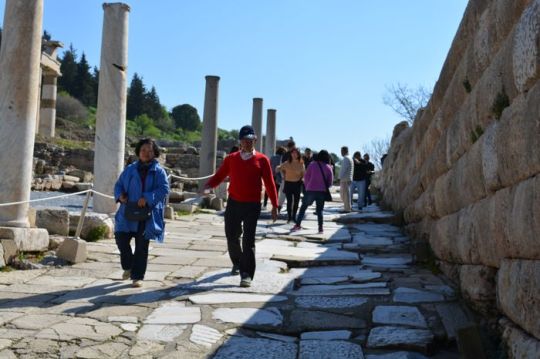
The Abyss of Turkish Indifference
A Nation Unraveling
This article delves into the alarming reality of complete anarchy engulfing the nation. In the vacuum of effective governance, Turkish authorities are failing in the fundamental roles of justice administration and order maintenance. The dire consequences are felt acutely by the Christian population, left unprotected against the onslaught of violence, with authorities either unwilling or unable to intervene.
A Broken System
The Turkish authorities, tasked with upholding justice and order, find themselves paralyzed in the face of escalating anarchy. The administration’s failure to protect Christians against the onslaught of their Muslim counterparts is stark. Kaimakams and Mudirs, responsible for executing government orders, point to resistance from Turks as an insurmountable obstacle. Anarchy reigns as the Turkish leadership avows its incapacity to maintain order.
Empty Promises and Excuses
Amid the chaos, the Kaimakams and Mudirs, entrusted with local governance, offer feeble excuses for their inaction. The Mutle-Serif of Philippopolis asserts his helplessness, citing the need for cavalry to control the Muslim populace. Whether a pretext or a genuine obstacle, the cries for justice from the Christian community go unanswered. The Turkish authorities not only fail to act but, in some instances, actively prevent relief efforts Private Tours Bulgaria, shrouding their intentions in an opaque veil of bureaucracy.
A Puzzling Stance
Understanding Turkish perversity becomes a herculean task, as the authorities not only refrain from action but hinder well-intentioned initiatives. In Philippopolis, an attempt to organize a subscription for the victims faces an inexplicable refusal by the Mutle-Serif. The perplexing denial, claiming government assistance as sufficient, underscores the opaque nature of Turkish decision-making, leaving the fate of the suffering populace hanging in uncertainty.
Unpredictable Turkish Actions
Turkish perversity emerges as an enigma, defying prediction or calculation. The inexplicable refusal to allow a subscription for starving women and children exemplifies the capricious nature of Turkish governance. In the absence of clear motives or a logical framework, navigating the labyrinth of Turkish decision-making proves to be a futile endeavor, leaving the victims of anarchy at the mercy of unpredictable and indifferent authorities.
A Cry Unanswered, A Nation Unseen
As anarchy tightens its grip, the cry for justice remains unanswered, and the plight of the Christian population goes unseen. The Turkish authorities’ indifference and perplexing decisions continue to cast a shadow over the fate of a nation teetering on the brink of chaos, leaving its people in a desperate struggle for survival.
0 notes
Photo
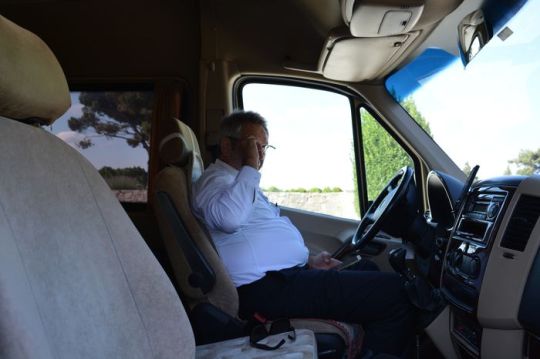
Unraveling the Aftermath
Post-Uprising Dynamics and Local Tensions
Unrestrained Freedom: A Surreal Interlude of Ignorance and Song
Following the capture of Avrat-Alan by the insurgents, an intriguing phase unfolded—a period marked by a surprising lack of aggression towards neighboring Mussulman villages. Seemingly content with their conquest, the rebels, oblivious to the imminent threat posed by 5,000 regular troops in Philippopolis, immersed themselves in the pleasure of newfound freedom. Their expressions of liberty manifested through joyous marches along the village streets, accompanied by the resonating tunes of national Bulgarian airs.
Strelcha’s Ambitious Uprising A Tale of Intrigue and Suspicion
While Otluk-kui and Avrat-Alan reveled in their rebellion, a neighboring village, Strelcha, enticed by the apparent ease and pleasure of insurrection, contemplated a similar uprising. However, the demographic composition posed a challenge, with half the population being Turks likely to resist such a move. In a strategic move, the Christians of Strelcha sought aid from their insurgent neighbors, triggering a series of events that escalated beyond expectation.
Insurgents from Otluk-kui and Avrat-Alan rallied to Strelcha’s assistance, igniting a clash with the Turkish population. The outcome of this skirmish resulted in the entire village succumbing to flames. The narrative of responsibility became a contentious issue, with conflicting accounts from Christians and Turks. Both parties vehemently accused the other of orchestrating the destructive blaze, giving rise to a complex web of blame that lingered over the scorched remnants of Strelcha Bulgaria Private Tours.
Echoes of Discord Unraveling the Truth Amidst Mutual Accusations
The smoldering ruins of Strelcha echo with mutual accusations, highlighting the deep-seated tensions between Christians and Turks. The probabilities suggest a grim reality—a collaborative effort in the destruction, as each faction targeted the other’s quarter in a vengeful reprisal.
This episode unveils not only the aftermath of a rebellion but also the intricate dynamics of communal relations in a region caught in the throes of conflict. The accusations, whether accurate or not, further contribute to the mistrust between different religious and ethnic groups, exposing the fault lines that simmer beneath the surface of Balkan society. As the insurgents revel in their songs of freedom, the burning embers of Strelcha serve as a stark reminder of the complexities that emerge in the wake of insurrection.
0 notes
Photo

Achmet-Agha
The Turkish authorities do not even pretend that there was any Turk killed here, or that the inhabitants offered any resistance whatever. When Achmet-Agha, who commanded the massacre, came with the Bashi-Bazouks and demanded the surrender of their arms, they at first refused, but offered to deliver them to the regular troops or to the Kaimakam at Tatar Bazardjik. This, however, Achmet-Agha refused to allow, and insisted upon their arms being delivered to him and his Bashi-Bazouks.
Christians and Turks
After considerable hesitation and parleying this was done. It must not be supposed that these were arms that the inhabitants had especially prepared for an insurrection. They were simply the arms that everybody, Christians and Turks alike, carried and wore openly, as is the custom here. What followed the delivery of the arms will best be understood by the continuation of the recital of what we saw yesterday.
At the point where we descended into the principal street of the place, the people who had gathered around us pointed to a heap of ashes by the roadside, among which could be distinguished a great number of calcined bones. Here a heap of dead bodies had been burnt, and it would seem that the Turks had been making some futile and misdirected attempts at cremation.
A little further on we came to an object that filled us with pity and horror. It was the skeleton of a young girl not more than fifteen, lying by the roadside, and partly covered with the dobris of a fallen wall. It was still clothed in a chemise ; the ankles were enclosed in footless stockings; but the little feet, from which the shoes had been taken, were naked, and owing to the fact -that the flesh had dried instead of decomposing, were nearly perfect Guided Istanbul Tour.
There was a large gash in the skull, to which a mass of rich brown hair nearly a yard long still clung, trailing in the dust. It is to be remarked that all the skeletons of women found here were dressed in a chemise only, and this poor child had evidently been stripped to her chemise, partly in the search for money and jewels, partly out of mere brutality, then outraged, and afterwards killed.
0 notes
Photo
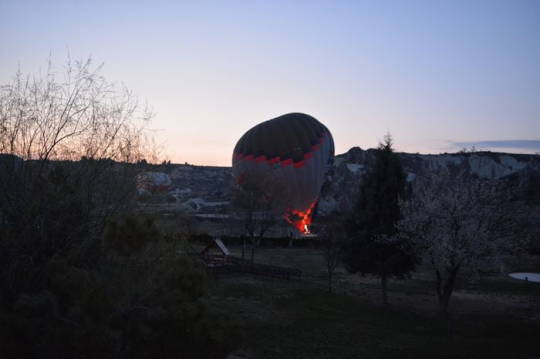
Little churchyard
The whole of the little churchyard is heaped up with them to the depth of three or four feet, and it is from here that the fearful odour comes. Some weeks after the massacre, orders were sent to bury the dead. But the stench at that time had become so deadly that it was impossible to execute the order, or even to remain in the neighborhood of the village.
The men sent to peiform the work contented themselves with burying a few bodies, throwing a little earth over others as they lay, and here in the churchyard they had tried to cover this mense heap of festering humanity by throwing in stones and rubbish over the walls, without daring to enter. They had only partially succeeded. The dogs had been at work there since, and now could be seen projecting from this monster grave, heads, arms, legs, feet, and hands, in horrid confusion Istanbul Private Tours.
We were told there were three thousand people lying here in this little churchyard alone, and we could well believe it. It was a fearful sight —a sight to haunt one through life. There-were little curly heads there in that festering mass, crushed down by heavy stones; little feet not as long as your finger on which the flesh was dried hard, by the ardent heat before it had time to decompose; little baby hands stretched out as if for help ; babes that had died wondering at the bright gleam of sabres and the red hands of the fierce-eyed men who wielded them; children who had died shrinking with fright and terror; young girls who had died weeping and sobbing and begging for mercy; mothers who died trying to shield their little ones with their own weak bodies, all lying there together, festering in one horrid mass.
They are silent enough now. There are no tears nor cries, no weeping, no shrieks of terror, nor prayers for mercy. The harvests are rotting in the fields, and the reapers are rotting here in the churchyard.
0 notes
Photo
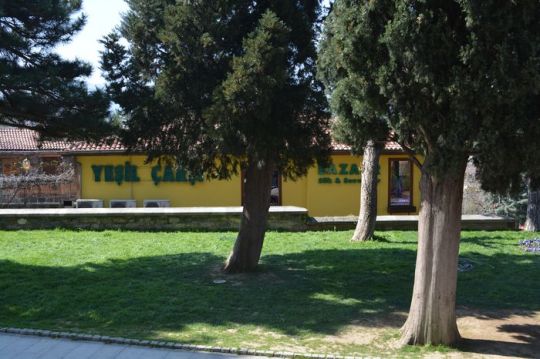
Killing two Bashi-Bazouks
The villagers appeared to think they were simply carrying out the instructions of Aziz Pacha, who told them to allow nobody to come to their village ; for it was after killing these two Bashi-Bazouks that they sent the third message to him asking for his protection, and informing him what they had done. But the Turks say that the messenger only delivered a part of the message, and said nothing about the killing of the two Bashi-Bazouks, and this is why he was arrested a day or two later, when the truth was known, for he had remained in Philippopolis and never returned to the village.
Be that as it may, there is no doubt that the villagers sent the message, for they made no secret of killing the two Bashi-Bazouks, and do not now. In the meantime the villagers, having received no answer to their third appeal for protection, and justly fearing the vengeance of the Bashi-Bazouks, of whose ravages in other villages they were receiving daily reports, began to prepare for defence. Some of them, however, decided to fly to Philippopolis and the other villages, and did so, leaving all their property behind. The rest determined to defend themselves to the last Guided Tours Turkey.
They collected provisions for several days in one of the churches on a little eminence overlooking the town, a place very well suited for defence, as it was in a commanding position and surrounded by a good heavy stone wall. They made loopholes in this wall, put several barrels of water in the church, and made ready for a siege. It will be observed that they never went out of their own village, nor made the slightest attempt to molest their Mussulman neighbours. Finally, on Tuesday morning, the 29th of April (old style), corresponding to our May 11th, the day before the massacre of Batak, the Bashi-Bazouks were reported to be coming from the direction of Ustuna.
Everybody—women and children as well as men—immediately abandoned their houses and took refuge in the church. But some, whose courage failed them at the last moment, determined to go out and surrender. They did so, and after having given up their arms, were massacred. This did not, however, encourage the others to follow their example, and they resolved all the more sternly to resist to the last.
0 notes
Photo

Male Christian population
Here is an example of Turkish ideas of reform. Until the last year the whole male Christian population, from infants one day old up to the age of a hundred, had to pay the military exemption tax. Last year, however, a great reform was ushered in with a loud flourish of trumpets. In future, only those capable of military service were to pay the exemption tax, and there were great rejoicings among the people.
But when the tax came to be levied, what was the astonishment of every body to find that each village was ordered to pay exactly the same sum as before. The tax was only redistributed. The round sum before paid on the whole population of the village now falls on the shoulders of those only capable of military duty. But the whole amount must be made up. This is the Turkish idea of reform, and the Turkish way of throwing dust in the eyes of Europe City Tours Istanbul.
And these are the people from whom we expect reforms! There will be no reforms. The thousands of helpless women and children, of babes and sucklings slaughtered in cold blood, whose bones and flesh are fattening the soil of Bulgaria, cry out against the hollow mockery, and give it the lie. And you say, oh statesmen of Europe, that the status quo must be maintained ; that this must last. I tell you it will not last. You must find another solution for the Eastern question, or another solution will find you. It will not last, or civilization is a delusion, justice a mockery, and Christianity a farce and a failure.
The following letter reached the Daily News office without date.
0 notes